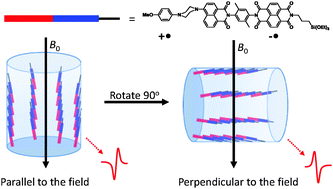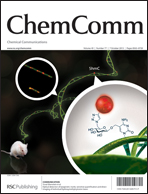Controlling the orientation of spin-correlated radical pairs by covalent linkage to nanoporous anodic aluminum oxide membranes†
Abstract
Ordered multi-spin assemblies are required for developing solid-state molecule-based spintronics. A linear donor–

- This article is part of the themed collection: Molecular Spintronics

 Please wait while we load your content...
Please wait while we load your content...